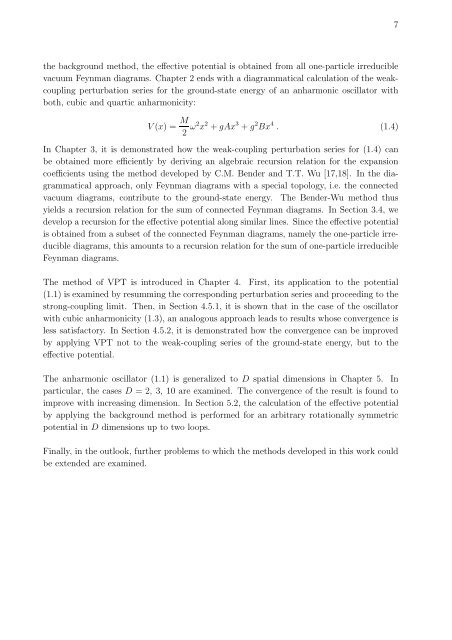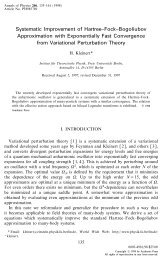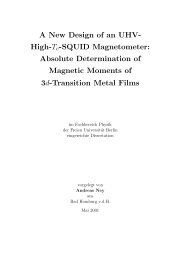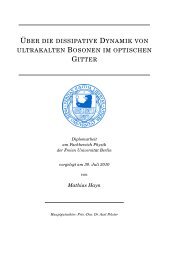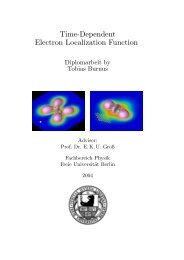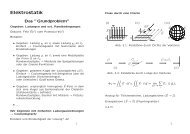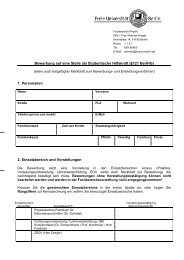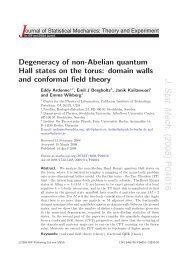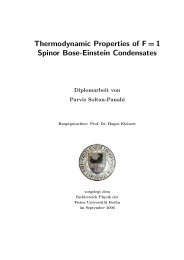Diploma thesis - Fachbereich Physik
Diploma thesis - Fachbereich Physik
Diploma thesis - Fachbereich Physik
Create successful ePaper yourself
Turn your PDF publications into a flip-book with our unique Google optimized e-Paper software.
7<br />
the background method, the effective potential is obtained from all one-particle irreducible<br />
vacuum Feynman diagrams. Chapter 2 ends with a diagrammatical calculation of the weakcoupling<br />
perturbation series for the ground-state energy of an anharmonic oscillator with<br />
both, cubic and quartic anharmonicity:<br />
V (x) = M 2 ω2 x 2 + gAx 3 + g 2 Bx 4 . (1.4)<br />
In Chapter 3, it is demonstrated how the weak-coupling perturbation series for (1.4) can<br />
be obtained more efficiently by deriving an algebraic recursion relation for the expansion<br />
coefficients using the method developed by C.M. Bender and T.T. Wu [17,18]. In the diagrammatical<br />
approach, only Feynman diagrams with a special topology, i.e. the connected<br />
vacuum diagrams, contribute to the ground-state energy. The Bender-Wu method thus<br />
yields a recursion relation for the sum of connected Feynman diagrams. In Section 3.4, we<br />
develop a recursion for the effective potential along similar lines. Since the effective potential<br />
is obtained from a subset of the connected Feynman diagrams, namely the one-particle irreducible<br />
diagrams, this amounts to a recursion relation for the sum of one-particle irreducible<br />
Feynman diagrams.<br />
The method of VPT is introduced in Chapter 4. First, its application to the potential<br />
(1.1) is examined by resumming the corresponding perturbation series and proceeding to the<br />
strong-coupling limit. Then, in Section 4.5.1, it is shown that in the case of the oscillator<br />
with cubic anharmonicity (1.3), an analogous approach leads to results whose convergence is<br />
less satisfactory. In Section 4.5.2, it is demonstrated how the convergence can be improved<br />
by applying VPT not to the weak-coupling series of the ground-state energy, but to the<br />
effective potential.<br />
The anharmonic oscillator (1.1) is generalized to D spatial dimensions in Chapter 5. In<br />
particular, the cases D = 2, 3, 10 are examined. The convergence of the result is found to<br />
improve with increasing dimension. In Section 5.2, the calculation of the effective potential<br />
by applying the background method is performed for an arbitrary rotationally symmetric<br />
potential in D dimensions up to two loops.<br />
Finally, in the outlook, further problems to which the methods developed in this work could<br />
be extended are examined.


